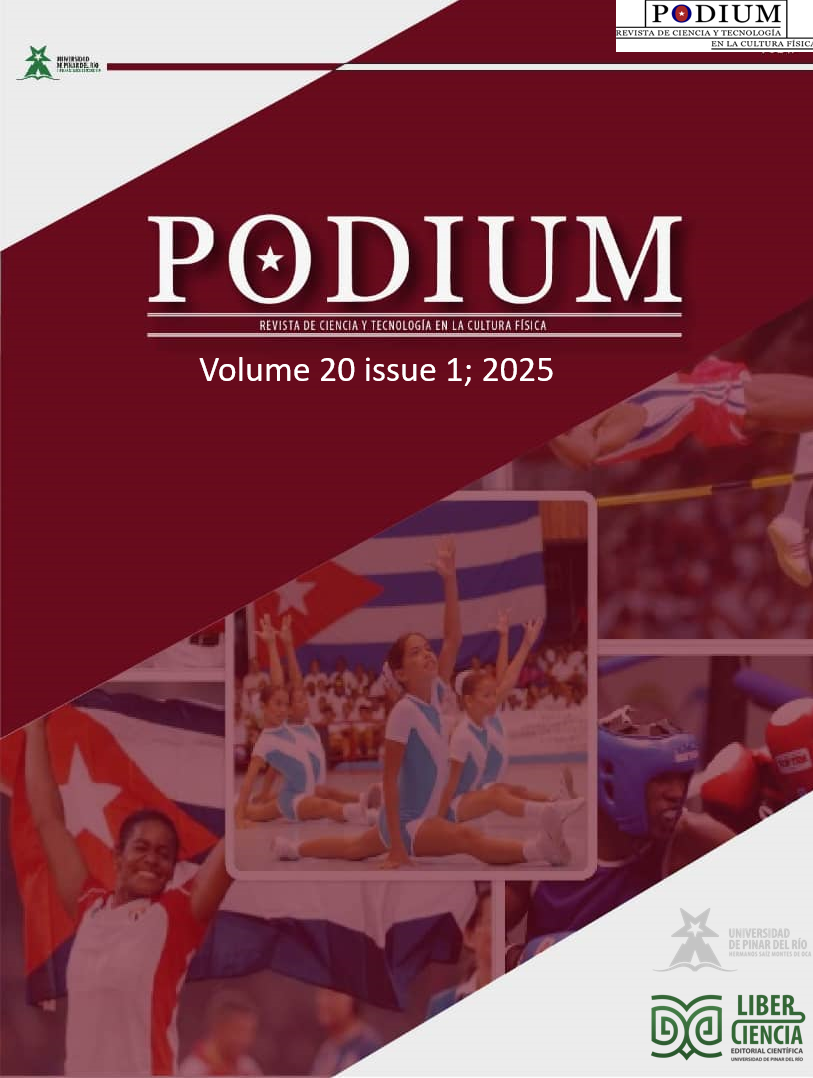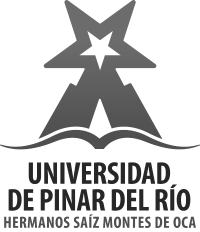Effects of Inspiratory Respiratory Musculature Training on Anaerobic Power in Rugby Players
Main Article Content
Abstract
Respiratory muscle training has emerged as a relevant field of study in the field of health and sports performance. The objective of this study was to describe a training methodology in the inspiratory muscles to improve anaerobic capacity in rugby players. The research is quantitative quasi-experimental of a longitudinal type, where results were compared between an experimental and control group, a total of twenty-two amateur rugby players. Maximum inspiratory pressure and maximum anaerobic power were evaluated (Shuttle Run Test) before the start of training. For inspiratory muscle training, the Powerbreathe® device was used, with a protocol of 60 inspirations at 50% of the maximum inspiratory pressure once a day, three times a week for six weeks. The results obtained showed a significant increase in maximum inspiratory pressure in the experimental group; Likewise, performance in the Shuttle Run test showed an improvement in the experimental group, both with a statistically significant difference. These findings suggest that the program had a positive impact on both indicators, highlighting the importance of interventions focused on improving respiratory capacity and physical performance.
Downloads
Article Details

This work is licensed under a Creative Commons Attribution-NonCommercial 4.0 International License.
References
Arnold, R. J., & Bausek, N. (2020). Effect of respiratory muscle training on dysphagia in stroke patientsA retrospective pilot study. Laryngoscope Investigative Otolaryngology, 5(6), 10501055. https://doi.org/10.1002/lio2.483
Boutellier, U., Buchel, R., Kundert, A., Spengler, C. (1992). The respiratory system as an exercise limiting factor in normal trained subjects. European Journal of Applied Physiology and Occupational Physiology. 65(4), 347-353. https://dx.doi.org/10.1007/BF00868139
Frias, L., & Ramos, Y. (2021). Fundamentales características de la actividad competitiva para el Rugby Siete en el contexto internacional. PODIUM. 16(3), 892904. https://podium.upr.edu.cu/index.php/podium/article/view/1115
García-Chaves, D. C., Corredor-Serrano, L. F., & Diaz Millan, S. (2023). Relación entre la fuerza explosiva, composición corporal, somatotipo y algunos parámetros de desempeño físico en jugadores de rugby sevens. Retos, 47, 103109. https://doi.org/10.47197/retos.v47.95549
Gómez, B., Gomes, M., Ventura, B. (2016). Use of Powerbreathe® in inspiratory muscle training for athletes: systematic review. Fisioterapia Em Movimento. 29(4), 821-830. https://dx.doi.org/10.1590/1980-5918.029.004.AO19
Griffits, L. & McConnell, A. (2007). The influence of inspiratory and expiratory muscle training upon rowing performance. Eur J Appl Physiol. 99(5), 457-466. https://dx.doi.org/10.1007/s00421-006-0367-6
Jiménez, J., Ugas, D., & Rojas, C. (2017). Efectos de un Programa de Rehabilitación Pulmonar con énfasis en el entrenamiento de la musculatura respiratoria y actividades recreativas en un grupo de pacientes con EPOC. Revista chilena de enfermedades respiratorias, 33(2), 85-90. https://dx.doi.org/10.4067/s0717-73482017000200085
Mackala, K., Kurzaj, M., Okrzymowska, P., Stodó³ka, J., Coh, M., & Ro¿ek-Piechura, K. (2019). The Effect of Respiratory Muscle Training on the Pulmonary Function, Lung Ventilation, and Endurance Performance of Young Soccer Players. International journal of environmental research and public health, 17(1), 234. https://doi.org/10.3390/ijerph17010234
Martins, M. S. de A., Nunes, E. M., Rodrigues, C. D., Hernández-Mosqueira, C. M., & da Silva, S. F. (2018). Anthropometric Characteristics and low Member Power in University Players of Rugby-7. Revista En Ciencias Del Movimiento Humano Y Salud, 15(2), 1-9. https://doi.org/10.15359/mhs.15-2.4
Moreno, A. S. C., Agorreta, L. F., Marina, M., Fernández, L. S., & Ruiz, M. R. (2023). Allometric scaling for normalizing maximal oxygen uptake in elite rugby union players. Revista de la Federación Española de Medicina del Deporte y de la Confederación Iberoamericana de Medicina del Deporte, 40(214), 85-93. https://doi.org/10.18176/archmeddeporte.00122
Nunes Júnior, A. de O., Donzeli, M. A., Shimano, S. G. N., Oliveira, N. M. L. de ., Ruas, G., & Bertoncello, D. (2018). Effects Of High-Intensity Inspiratory Muscle Training in Rugby Players. Revista Brasileira De Medicina Do Esporte, 24(3), 216219. https://doi.org/10.1590/1517-869220182403166216
Ochog Morales, D. A., & Calero Morales, S. (2023). Importancia del VO2máx y la capacidad de recuperación de los futbolistas. PODIUM, 18(1), e1397 https://podium.upr.edu.cu/index.php/podium/article/view/1397
Owen, C., Till, K., Phibbs, P., Read, D. J., Weakley, J., Atkinson, M., ... & Jones, B. (2023). A multidimensional approach to identifying the physical qualities of male English regional academy rugby union players; considerations of position, chronological age, relative age and maturation. European Journal of Sport Science, 23(2), 178-188. https://doi.org/10.1080/17461391.2021.2023658
Troncoso Galleguillos, P., Rojas Cabezas, G., González González, R., & Vicuña Salas, M. (2021). Efecto del entrenamiento muscular inspiratorio sobre el tiempo de nado y función pulmonar en jóvenes nadadores de alto rendimiento. Revista Chilena De Rehabilitación Y Actividad Física, 1(1), 112. https://doi.org/10.32457/reaf1.1731
Vasconcelos, T., Hall, A., & Viana, R. (2017). The influence of inspiratory muscle training on lung function in female basketball players - a randomized controlled trial. Porto Biomedical Journal,2 (3), 86-89. https://doi.org/10.1016/j.pbj.2016.12.003
Wang, W., Wu, D., Wang, H., Zhang, Z., Jiang, X., Li, S., Shi, Y., & Gao, X. (2024). Acute Effects of Breath-Hold Conditions on Aerobic Fitness in Elite Rugby Players. Life (Basel, Switzerland), 14(8), 917. https://doi.org/10.3390/life14080917
Way, K. L., Vidal-Almela, S., Keast, M.L., Hans, H., Pipe, A. L., y Reed, J. L. (2020). The feasibility of implementing high-intensity interval training in cardiac rehabilitation settings: a retrospective analysis. BMC Sports Sci Med Rehabil 12, 38 https://doi.org/10.1186/s13102-020-00186-9


